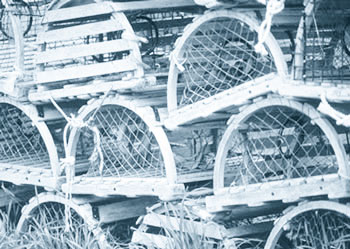Common menu bar links
A Look at Canada
The Atlantic Region
|
Nova Scotia, New Brunswick, Newfoundland and Labrador, and Prince Edward Island are Canada’s Atlantic provinces. Early European explorers first came to this part of Canada to fish and trade with Aboriginal peoples. Later, settlers built strong communities that thrived on farming, fishing and shipbuilding. The region’s coasts and natural resources have made the Atlantic provinces an important part of Canada’s history and development.
The people
Italian explorer John Cabot reached Newfoundland in 1497, while French explorer Jacques Cartier explored the region in the 1500s. In the 1600s, French settlers, who became known as Acadians, were the first Europeans to settle permanently in Canada. Over time, they were joined by settlers from the British Isles and Germany.
During and after the American Revolution (1775-1783), thousands of people left the United States. They became known as United Empire Loyalists. Many of them settled in the Atlantic region. They had various ethnic backgrounds, including English, Irish, Scottish, German, Swiss, Dutch, Italian, Jewish and African-American. Today, people of many different cultures and ethnic backgrounds live in the Atlantic region. Many are descendants of the earliest arrivals.
New Brunswick is the only officially bilingual province in Canada. About one-third of the population lives and works in French.
 |
| Cabot Trail, Cape Breton, Nova Scotia. |
The economy
Atlantic Canada’s economy has traditionally relied on a strong resource sector, including fishing, farming, forestry and mining. The economy has grown and diversified in recent years. This has led to the development of other sectors, including information technology, professional services, advanced manufacturing, aquaculture, and oil and gas exploration. Trade has also increased.
Potatoes and fruit from Prince Edward Island, Nova Scotia and New Brunswick are sold across Canada and to other countries. The food processing industry is another important sector of the economy.
New Brunswick and Nova Scotia have extensive forests that allow them to produce valuable products like pulp, paper and lumber. Forest products are the most valuable manufacturing industry in New Brunswick. Many of these products are exported to other countries.
Newfoundland and Labrador, traditionally dependent on the fishing industry, is developing other natural resources such as oil, nickel, copper and cobalt. Hibernia, off the coast of Newfoundland and Labrador, is the fifth largest oil field in Canada. Manufacturing and other industries continue to grow.
 |
| Lobster traps. |
The service industry is also very important to the Atlantic economy. As in the rest of Canada, more people work in banking, government, and financial and personal services than in traditional resource industries.
The Gulf of the St. Lawrence River and the Atlantic Ocean are important tourist attractions in the region. Thousands of tourists visit the Atlantic provinces each year for the spectacular scenery, natural coastlines, warm beaches and world-class golf courses. About 85,000 Atlantic Canadians work in the tourism industry.
| Population (approximate) | |
| Newfoundland and Labrador | 534,000 |
| Nova Scotia | 943,000 |
| Prince Edward Island | 139,000 |
| New Brunswick | 757,000 |
| Atlantic Provinces | 2,373,000 |
